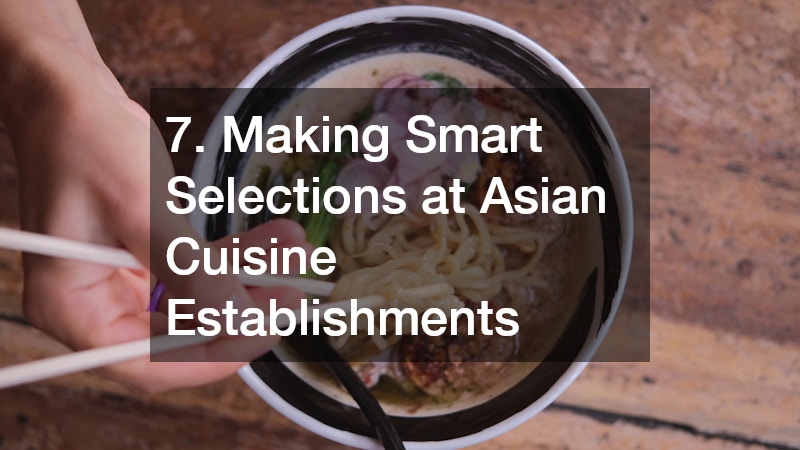Clean eating when you’re away from home can feel like a daunting challenge, especially when schedules are tight, hunger hits hard, and dining choices are limited. Many people want to maintain healthy habits but find themselves surrounded by highly processed foods, unclear ingredient labels, inconsistent preparation standards, and meals loaded with excessive oils, sugars, and additives. The good news is that even in a fast-paced world filled with countless types of dining environments, clean eating is still absolutely achievable with the right knowledge and awareness.
Choosing cleaner meals while eating out isn’t just about selecting the right menu items; it’s also about understanding the bigger picture behind how food is prepared, stored, and served. The safety, freshness, and nutritional value of a dish often depend on what happens behind the scenes—long before it reaches the plate. Factors such as kitchen organization, staff training, sourcing practices, and storage methods all influence the final meal. Observing these subtle cues helps diners quickly assess whether an eatery is committed to high standards or cutting corners.
1. Understanding Equipment and Material Quality in Food Preparation
When striving to eat clean while dining out, one of the most important yet often overlooked considerations is the quality of the equipment used in the kitchen. Many eateries operate with a broad mix of tools, pans, surfaces, and preparation stations, and the condition and material of these items reveal much about food safety and care. Clean equipment supports better flavor, prevents off-putting odors, and ensures that ingredients maintain their intended quality. For example, surfaces should look well-maintained rather than deeply scratched or worn down, and prep tools should be stored neatly in designated spaces. When diners learn to study details like these—even from afar—they gain valuable insights into how seriously a restaurant treats cleanliness and nutritional integrity. With attention to these elements, it becomes easier to differentiate establishments that take pride in their craft from those that simply keep up appearances.
More specifically, understanding the types of cooking materials and tools used can help diners make more informed decisions about the meals they choose, especially when considering possible exposure to harmful elements like certain metals. While most high-quality kitchens use safe, food-grade stainless steel, poorly maintained cookware or old equipment can sometimes contribute to contamination risks. Observing signs such as flaking surfaces, rust spots, or visibly aged utensils can offer clues about a restaurant’s commitment to hygiene. Diners don’t need specialized training to pick up on these cues—simply noticing the state of open kitchens, buffet tools, or visible prep stations can reveal a great deal. This awareness empowers individuals to choose establishments that align with their clean-eating goals.
2. Evaluating Food Storage Habits for Fresher, Cleaner Meals
Food storage practices play a major role in determining whether a restaurant consistently delivers safe, fresh, and nutrient-rich meals. Ingredients must be handled properly from the moment they arrive on-site through preparation, and poor storage conditions can diminish both flavor and quality. Diners should pay attention to outward signs of good storage habits when they order food or pick up items at the counter. For example, produce should appear crisp, proteins should be freshly prepared, and sauces or dressings should not look old or congealed. Many eateries with strong organizational systems display signs of efficiency—well-labeled containers, neatly arranged stations, and staff members who handle ingredients with care. When restaurants maintain freshness as a priority, diners can confidently enjoy meals made with ingredients that support clean eating.
In more practical terms, one of the best indicators of storage quality is the type of storage container an establishment uses. Containers that seal properly, resist odors, and prevent leaks reflect a commitment to both food safety and ingredient integrity. High-quality containers also protect ingredients from cross-contamination and help preserve flavor. Even without entering the kitchen, diners can often catch glimpses of how ingredients are stored in open prep areas, salad bars, or visible shelves. If containers look mismatched, cracked, or poorly sealed, that may signal a lack of attention to foundational hygiene. Knowing how to spot these details can help people choose eateries that take food handling seriously.
3. Identifying Restaurants with High-Quality Tools and Supplies
The caliber of tools and materials used by an eatery is a strong reflection of its overall food philosophy. Establishments committed to clean eating typically maintain high standards in both visible and behind-the-scenes areas. Diners may not always see every element of food preparation, but there are usually subtle signs of quality throughout the dining environment. Clean prep counters, neat utensil stations, well-maintained restrooms, and employees who handle food with care all signal a thoughtful approach. Inadequate tools or disorganized workspaces, on the other hand, may indicate a rushed or careless kitchen. Understanding how to interpret these observations helps diners make informed choices without guessing or relying solely on menu descriptions.
A useful way to assess these standards is by noting whether the establishment invests in dependable restaurant supplies, which directly influence food quality. High-quality cutting boards, insulated carriers, sanitized utensils, and sturdy prep tools suggest a well-run kitchen that prioritizes hygiene and safety. Conversely, worn-out tools, poorly stored utensils, and cluttered workspaces can introduce contamination risks and reduce the nutritional value of final dishes. Diners who pay attention to these cues—especially in open-kitchen settings—gain a clearer picture of whether an eatery upholds clean-eating principles.
4. Making Cleaner Choices at an Italian or American Comfort-Food Spot

Italian and American comfort-food eateries are popular options for diners seeking fast, flavorful meals, but they can present challenges for those striving to eat clean. Many of these establishments offer hearty dishes with rich sauces, melted cheeses, cured meats, or deep-fried items that, while delicious, may not align with clean-eating preferences. However, not all comfort-food locations are created equal. Some make fresh dough daily, prioritize locally sourced vegetables, and offer lighter modifications upon request. Clean eating is entirely possible in these environments when diners understand how to navigate the menu and ask for small adjustments that reduce the overall heaviness of a meal without sacrificing taste.
When visiting a pizza restaurant, diners can make smarter choices by focusing on simple, whole-food toppings and opting for lighter preparation styles. Thin crusts, vegetable-loaded combinations, grilled proteins, and minimal cheese can transform a traditionally heavy dish into a more balanced meal. Asking whether dough is made from whole grains or if sauces are prepared fresh can provide valuable insight into the establishment’s priorities. Additionally, skipping overly processed toppings like pepperoni and sausage in favor of mushrooms, basil, or fresh tomatoes helps maintain a cleaner overall meal profile. With mindful substitutions, even classic comfort food can align with clean-eating goals.
5. Navigating Heavier Menu Environments While Staying Health-Focused
Some eateries are known for heavier menus filled with indulgent appetizers, fried favorites, rich desserts, and large portion sizes. These establishments can feel intimidating for those striving to maintain a cleaner eating style, but they often offer hidden gems that fit healthier preferences. Many places provide grilled alternatives, customizable dishes, or lighter side options that may not be prominently advertised. Diners who approach these environments with curiosity and confidence can often craft a meal that aligns with their values by asking about preparation methods or requesting modifications such as removing excessive sauces, swapping sides, or choosing dressing on the side.
A common example of this type of establishment is a sports bar, where the standard menu may initially appear to be dominated by fried wings, loaded fries, or calorie-dense burgers. However, individuals can still make smart selections by choosing grilled versions of popular items, opting for lettuce wraps instead of buns, or pairing entrées with vegetable sides instead of heavier starches. Many sports bars today recognize the growing interest in health-conscious dining and are willing to accommodate requests for lighter preparation styles. By reading the menu carefully and asking thoughtful questions, diners can enjoy the atmosphere without compromising their clean-eating intentions.
6. Choosing Cleaner Meals from Professional Food Providers
Professional food providers play a significant role in events, meetings, and gatherings where individuals may not have complete control over the menu. Fortunately, many modern food service companies are increasingly aware of dietary preferences and offer cleaner, more nutritious options. When reviewing a menu for an event or group meal, it helps to look for items featuring whole grains, colorful vegetables, lean proteins, and minimally processed ingredients. Additionally, asking whether dishes can be prepared with less oil, fewer sweeteners, or simpler sauces can lead to healthier choices without diminishing flavor or presentation.
When selecting among various catering companies, it’s useful to ask about ingredient sourcing, preparation practices, and storage methods. Companies that emphasize fresh produce, responsibly sourced proteins, and made-from-scratch dishes are often better aligned with clean-eating goals. Additionally, caterers who transport food using proper containers and temperature controls typically demonstrate strong food-safety standards. Whether planning a corporate event or a private celebration, choosing a provider with transparent practices helps ensure that clean-eating principles are upheld even in large-group settings.
7. Making Smart Selections at Asian Cuisine Establishments

Asian cuisine offers an abundance of naturally clean options, especially when meals highlight fresh vegetables, simple broths, lean proteins, and minimally processed grains. Many Asian restaurants also emphasize balance, variety, and contrasting textures, making it easier to choose lighter fare. However, diners should still remain mindful of added sugars in sauces, excessive sodium in soups, and deep-fried appetizers that can quickly turn a once-healthy meal into a less nutritious one. Understanding how dishes are prepared and which options emphasize whole ingredients will help diners maintain cleaner eating habits in any Asian-inspired setting.
A visit to a sushi bar can be particularly rewarding for clean eaters because so many offerings rely on fresh, raw, or minimally cooked ingredients. Items such as sashimi, hand rolls with fresh vegetables, miso soup, and seaweed salads can form the foundation of a nutrient-dense meal. Diners may also opt for brown rice or request less sugary sauces to further improve the nutritional profile. Observing the freshness of fish, cleanliness of counters, and attentiveness of staff helps ensure that the meal aligns with both health and safety standards. With mindful ordering, sushi becomes a satisfying and clean option for those eating on the go.
8. Selecting Lighter and Fresher Midday Meal Promotions
Midday meal promotions are popular across many types of eateries because they provide quick, affordable options for busy schedules. However, these specials sometimes prioritize convenience over nutrition, offering dishes that may have been prepared earlier in the day or reheated multiple times. This doesn’t mean clean eating is off the table during lunch hours. Diners can make better choices by selecting items with fresh vegetables, lean proteins, straightforward seasonings, and minimal sauces. Asking whether a dish is made to order or if substitutions are permitted can significantly improve the overall nutritional quality of a midday meal.
When choosing among different lunch specials, diners should also pay close attention to portion sizes and the balance of ingredients. Many lunchtime meals offer oversized servings of carbohydrates paired with small amounts of vegetables or protein. Requesting more balanced proportions—such as extra greens or swapping heavier sides for lighter alternatives—helps transform these meals into clean-eating options. Additionally, avoiding fried components and choosing grilled or steamed selections ensures a fresher, lighter dining experience that supports long-term health goals.
9. Assessing Ingredient Organization for a Cleaner Dining Experience
Behind every clean meal is a well-organized kitchen that stores ingredients properly, rotates stock regularly, and ensures that food remains fresh from delivery to preparation. Even without entering the back of the house, diners can infer a great deal about a restaurant’s storage habits by observing visible details such as condiment stations, drink areas, or prep counters. Ingredients that appear fresh, neatly arranged, and shielded from contamination often reflect a broader culture of cleanliness and care. A kitchen that takes organization seriously typically upholds higher standards in all aspects of food preparation.
One important indicator of a restaurant’s attention to cleanliness is the state of its pantry storage. Well-maintained pantries feature sealed containers, clearly labeled ingredients, dry shelving, and proper separation of different food categories. When establishments follow these best practices, ingredients retain their flavors, textures, and nutritional value more effectively. Although diners may not see the pantry itself, clues such as orderly shelves near service areas, neatly stored bags or boxes, and tidy prep stations suggest that storage spaces are likely maintained with equal attention. Clean-eating enthusiasts benefit by choosing restaurants that demonstrate strong organizational habits throughout their operation.
10. Integrating Clean Eating Strategies into Quick and Portable Meals

Not every dining experience involves sitting down for a full meal; many people rely on portable, handheld, or ready-made options. Clean eating remains entirely possible in these situations, provided that individuals know how to evaluate the freshness and quality of items quickly. For example, diners can prioritize meals with visible vegetables, high-quality proteins, and minimal sauces. Reading labels, assessing portion sizes, and avoiding heavily processed selections all support cleaner eating habits on busy days. Simple strategies such as choosing whole-food snacks or beverages with limited ingredients can make a significant difference in on-the-go nutritional choices.
When ordering from a take out restaurant, diners can make cleaner choices by asking how long dishes have been prepared, opting for customizable bowls, and selecting fresh sides instead of heavier, pre-packed items. Many take-out establishments now offer nutrient-dense options like salad bowls, grilled protein plates, or vegetable-forward entrées. Additionally, choosing dishes that travel well—such as stir-fries, grain bowls, or steamed items—helps ensure the meal maintains its quality from kitchen to table. Even fast meals can fit into a clean-eating lifestyle with mindful ordering and awareness of ingredient quality.
Clean eating on the go becomes far easier once individuals understand how to evaluate the quality of their food environments. From equipment standards and storage methods to menu construction and preparation techniques, numerous visual and behavioral cues can help diners identify which establishments prioritize freshness, safety, and nutritional integrity. Instead of relying solely on menu descriptions or assumptions, diners benefit greatly from observing signs of cleanliness, asking thoughtful questions, and choosing meals that highlight whole, minimally processed ingredients. Clean eating is not about perfection but about making intentional choices that support long-term well-being.
Whether the meal comes from a sit-down restaurant, a specialty eatery, an event catered by professionals, or a quick walk-in take out spot, clean eating remains within reach for anyone who knows what to look for. With practice, these skills become second nature, empowering individuals to enjoy delicious, satisfying meals without compromising their values. By focusing on freshness, simplicity, and safety across all types of eateries, diners can maintain a consistent clean-eating lifestyle even in the busiest moments of everyday life.

